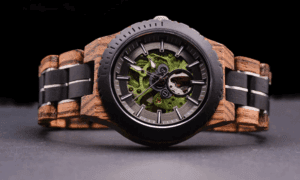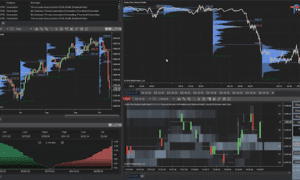The relationship between watch winder and magnetization watch concerns has generated significant debate among horological enthusiasts. While magnetization poses a genuine threat to mechanical timepieces, the specific risk posed by watch winders requires scientific examination rather than speculation.
Magnetization occurs when ferromagnetic components within a watch’s movement become permanently magnetized, disrupting the delicate balance wheel’s oscillation and causing timekeeping irregularities. Understanding whether watch winders contribute to this phenomenon demands a technical analysis of both magnetization mechanisms and winder operation principles.
How Watch Magnetization Occurs
Watch magnetization results from exposure to magnetic fields exceeding the watch’s antimagnetic resistance threshold. Most mechanical watches resist fields up to 60 gauss, while antimagnetic timepieces withstand 1,000 gauss or more.
The primary culprits include smartphone speakers, laptop computers, magnetic closures, and MRI equipment. When ferromagnetic components like the balance wheel, hairspring, or escape wheel encounter strong magnetic fields, they retain magnetism, causing the hairspring coils to attract each other and alter the watch’s rate.
Magnetization symptoms include sudden timekeeping acceleration, erratic behavior, or complete stoppage. Unlike mechanical damage, magnetization is completely reversible through demagnetization procedures using specialized equipment.
Watch Winder Mechanisms Explained
Modern watch winders employ low-voltage DC motors to rotate timepieces through predetermined patterns, maintaining mainspring tension and lubricant distribution. These motors generate electromagnetic fields as an inherent byproduct of their operation.
The magnetic field strength depends on motor specifications, shielding effectiveness, and proximity to the timepiece. Quality winders implement magnetic shielding through mu-metal linings or strategic motor placement to minimize field exposure.
Rotation patterns vary from simple bidirectional movement to complex programs mimicking natural wrist motion. The motor’s electromagnetic signature remains consistent regardless of rotation complexity, making field strength the primary magnetization factor.
Potential Magnetization Risks
The watch winder and magnetization watch relationship centers on electromagnetic field proximity and exposure duration. While winder motors generate magnetic fields, their strength typically remains below the threshold for permanent magnetization.
Research indicates that quality winders produce fields between 1-10 gauss at the watch position—significantly below the 60-gauss threshold for standard mechanical watches. However, inferior winders with inadequate shielding may generate stronger fields, particularly with aging or failing motors.
Extended exposure compounds potential risks. Unlike brief smartphone contact, watches remain in winders for weeks or months, allowing cumulative magnetic influence. This prolonged exposure may gradually affect highly sensitive components, even with relatively weak fields.
Distance proves crucial—magnetic field strength decreases exponentially with distance. Winders positioning watches several centimeters from motors significantly reduce exposure compared to direct motor contact.
Prevention and Maintenance Strategies
Selecting quality watch winders represents the primary defense against magnetization risks. Mozsly watch winder models incorporate magnetic shielding and precise motor placement to minimize electromagnetic exposure while maintaining reliable operation.
Key prevention strategies include:
Motor Quality Assessment: Choose winders with specification sheets detailing magnetic field measurements. Reputable manufacturers provide gauss readings at various distances from the motor housing.
Shielding Verification: Inspect winders for mu-metal linings or magnetic isolation chambers. These materials effectively contain electromagnetic fields, preventing watch exposure.
Periodic Monitoring: Regular timekeeping accuracy checks help identify magnetization symptoms early. Sudden rate changes warrant immediate investigation and potential demagnetization.
Strategic Placement: Position winders away from electronic devices, speakers, and magnetic sources. Maintain adequate spacing between multiple winders to prevent field interaction.
Professional Servicing: Annual service appointments should include magnetization testing using specialized equipment. Watchmakers can detect and correct magnetization before it causes permanent damage.
Expert Recommendations
Professional horologists emphasize that magnetization risks from quality winders remain minimal compared to everyday electronic exposure. However, proper winder selection and maintenance practices ensure optimal protection.
For valuable timepieces, consider antimagnetic watches or those with increased magnetic resistance. Modern movements increasingly incorporate silicon components, which offer superior magnetic immunity compared to traditional steel parts.
Monitor timekeeping performance regularly, documenting any sudden changes. Professional demagnetization costs significantly less than movement repair resulting from prolonged magnetization exposure.
Ultimately, the watch winder and magnetization watch concern should not deter enthusiasts from using quality winders. With proper selection, maintenance, and monitoring, winders provide valuable benefits while maintaining minimal magnetization risk.
The key lies in understanding that magnetization represents a preventable and reversible condition, not an inevitable consequence of winder use. Quality equipment, informed practices, and regular professional oversight ensure that watch winders enhance rather than compromise timepiece longevity and performance.



































